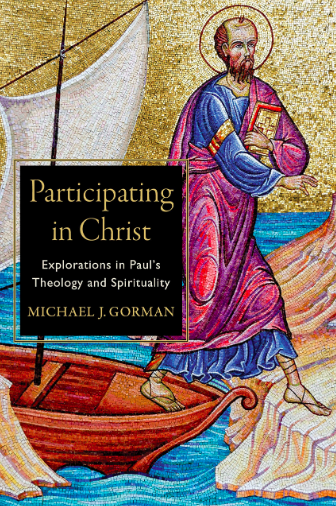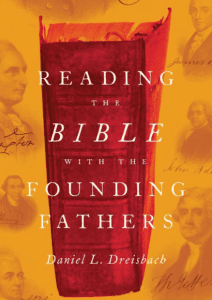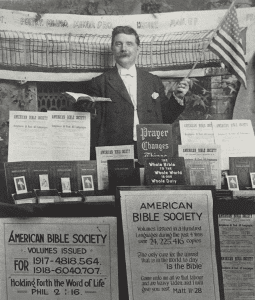Everyone claims their theology is biblical. Which means “biblical” is used by everyone and so many different approaches use “biblical” that “biblical” diminishes in value. It becomes, sad to say, little more than a claim to authority.
What does it take for you to say something is “biblical”? Does biblical theology (as historical description — below) hold theology hostage to historical discoveries?
Jacob Milgrom is a world’s leading scholar on Leviticus: are his commentaries “biblical” theology? Lutheran and Reformed scholars and pastors teach a covenant theology (what I call covenant soterian theology): is this biblical theology? N.T. Wright ties the Bible together into the Story from creation to consummation: is this “biblical” theology? Wayne Grudem offers a politics that he would say is “biblical”: Is it biblical? What makes something a “biblical” theology?
 Good question. And we’ve got a wonderful new textbook in a texbook-ish format, but readable, accessible and useful for upper level college and seminary/graduate students, that introduces us to five kinds of “biblical” theology. The book is called Understanding Biblical Theology: A Comparison of Theory and Practice, by Edward Klink III and Darian Lockett. We need this kind of book for students. Just this semester at Northern Seminary I taught (and am still teaching) “New Testament Theology” and I did a brief taxonomy of the various methods and approaches to NT theology on that day. What I did not find was a student-level sketch of the various approaches to NT theology, and this book — while more focused on the whole Bible — will be a good taxonomy for anyone teaching “biblical” theology — Old or New Testament.
Good question. And we’ve got a wonderful new textbook in a texbook-ish format, but readable, accessible and useful for upper level college and seminary/graduate students, that introduces us to five kinds of “biblical” theology. The book is called Understanding Biblical Theology: A Comparison of Theory and Practice, by Edward Klink III and Darian Lockett. We need this kind of book for students. Just this semester at Northern Seminary I taught (and am still teaching) “New Testament Theology” and I did a brief taxonomy of the various methods and approaches to NT theology on that day. What I did not find was a student-level sketch of the various approaches to NT theology, and this book — while more focused on the whole Bible — will be a good taxonomy for anyone teaching “biblical” theology — Old or New Testament.
They provide five models, and I suspect not a few of us will raise some questions about the order on their spectrum. It is only in the analysis of each model and theologian that their rationale will become clear. But they move the models or types along a spectrum from “history” to “theology,” and their five types of biblical theology (BT) are:
1. BT as historical description: James Barr
2. BT as history of redemption: D.A. Carson
3. BT as worldview-story: N.T. Wright
4. BT as canonical approach: B. Childs
5. BT as theological construction: Francis Watson
The book is mostly theoretical and could have used a single text, which I will do in this series of posts, like Genesis 1:26-27, to illustrate each type of biblical theology. Each type is processed through the following themes:
The task, the use, the scope and sources, the hermeneutical approach, the subject matter.
The first type is biblical theology as historical description, and the choice of James Barr is both exceptional and odd. Exceptional because he is well-known for his fierce criticisms of how many/most do “biblical” theology, and some of his attacks were withering and made many of us nervous about using sources (like Kittel) and studies (like Von Rad or Childs). The reason Barr is odd is because Barr never really produced a biblical theology. One could also probe Milgrom, Walton on Genesis 1, Hugh Williamson on the Chronicler or Isaiah.
But it all comes down to history, so that biblical theology is to be done by the professional biblical scholar who alone is qualified to read the languages at the level of expertise needed to contextualize those texts in history; the method does not care at all about normative theology but only “what it meant” “back then” to the “original author/text.” It is set over against theology as we know it; it uses historical methods and all historical methods; and it is exegesis and history, including the dissection of the text into its sources.
The big category often used here: it is descriptive, not prescriptive. It is description of the past, of the text in the past, of the author in the past. The past tense is the best way to carry out the business of biblical theology.
So “image of God” meant what it meant in the Ancient Near East (representative of a king) so there are discussions of how these terms are used in the ANE texts in Egypt and Babylon etc, or how this term is used in the Priestly source of Genesis 1:1–2:3, or in Genesis — but Barth’s relationality or modern scientific studies showing the uniqueness of humans over against the animal kingdom or the feminist appropriation of Genesis 1’s text are of no use. Nor does the use of “image of God” for Jesus have anything to do with “biblical” theology in Gen 1. The “us” of “let us” is not about the Trinity but about a divine council or angels or something along these lines because that is what the author at that time would have meant.
All that matters is what that text meant to that source/text at that time in its context. And that is biblical theology for this type of biblical theology. What it might mean for theology in later texts or in church history or today are of no concern to this type of biblical theology.
Though Klink and Lockett do not think this approach is the same as the History of Religions School, I would connect them closer than they do even if there are some notable differences (it’s degree not kind).











